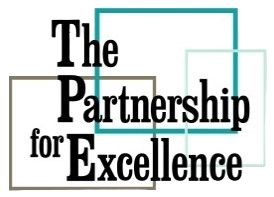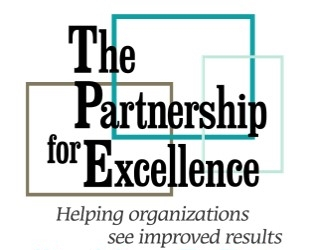The Power of an Organizational Profile
Upon opening the Baldrige Excellence Framework® booklet, you will find the Criteria for Performance Excellence® following the initial introductory pages. The Criteria comprises a series of questions designed to help your organization in leveraging your strengths and core competencies, addressing challenges, and adopting a systems perspective. This holistic approach to organizational management emphasizes agility and resilience to ensure sustained success, while also implementing continuous improvement initiatives to drive performance excellence, all aimed at achieving your mission. The initial questions in the Criteria aim to create an organizational profile for your organization.
What is an Organizational Profile
The Organizational Profile provides a concise overview of your organization and its strategic context. It offers insight into key internal and external factors affecting your organization, including vision, culture, values, mission, core competencies, and your competitive environment. Understanding the characteristics and attributes outlined in an organizational profile is essential for every organization, as it should guide various aspects of operations. These include leadership practices, workforce planning and development, customer and market strategies, performance measurement, identification of areas for improvement, and the adoption of relevant technologies and innovations. It describes what is most relevant and important to your business and its success.
The Value of Developing an Organizational Profile
Regardless of whether your organization is preparing a Baldrige-based application, creating an organizational profile offers significant value. Some of the benefits of having an organizational profile include:
- It aligns key processes and outcomes with the organization's priorities.
- It ensures a shared understanding of strategic priorities and emphasizes what is most important to the organization.
- It facilitates dialogue among key decision-makers to define the organization’s identity.
- It provides a snapshot of the organization, detailing how it operates, and its strategic challenges.
- It identifies core competencies, strategic advantages, and strategic opportunities, that may provide a competitive advantage in the marketplace
Use your Organizational Profile as the Starting Point
Developing an organizational profile is a great first step to creating a Baldrige-based application as it lays the foundation for the rest of your application and sets the context for responding to the criteria items. It defines what is most relevant and gives you the opportunity to share what is important to the organization. Having a shared view, among key decision-makers, is essential for your organization’s success and ability to achieve your goals. An organizational profile can be used as the initial self-assessment of your organization to Identify gaps/lack of deployment, guide the selection of information and data, and address conflicting perspectives so you can work on gaining a shared understanding of your organization among key decisionmakers.
Other Ways to Use Your Organizational Profile
Beyond the numerous advantages of maintaining an organizational profile, we have observed various applications of it by organizations. Some ways to utilize your organizational profile include:
Telling your Story: Whether giving a presentation in your community, meeting with a potential new customer, holding a supplier conference, or leading a Town Hall meeting with your people, you want to be able to tell your organization’s story succinctly and convincingly. An organizational profile does just that, it provides the information to concisely tell your story and what is most relevant to your organization.
Orientations: Your organizational profile is a great tool to use in orientations for new employees, managers, and board members. Indeed , the world's leading job site and a global platform for job matching and hiring, states that “onboarding practices that include orientation, training, and performance management programs help new employees access the right resources and better transition into their roles.” They also recommend including an overview of the organization, encompassing its vision and mission statement, objectives, goals, and history, as part of the job orientation process. Providing an organizational profile to new members of your organization would fully address this portion of an orientation.
Recruitment: When recruiting professionals for job vacancies in your organization, it’s just as important to promote your organization to job candidates as they should promote themselves to you. Faith Search Partners , the preeminent executive search firm for faith-based organizations, shares this perspective. They believe that “the search process is a two-way street and recognize that during a search, the candidate is evaluating the client just as much as the client will be evaluating candidates. The organizational profile is essential for us to gain the focused, in-depth understanding of our client’s organization necessary to ensure a successful search outcome.”
Providing a tone of expectations: An organizational profile offers valuable insight into the key factors influencing your organization, such as vision, culture, values, mission, core competencies, and competitive environment. It serves to set expectations by ensuring that key stakeholders have a clear understanding of the actions and behaviors required to foster a culture of excellence within the context of your organizational profile.
Establishing credibility with lenders: An organizational profile can provide relevant information to gain credibility with grantors, lenders, and philanthropists that financially support your organization. Funds for NGOs , a social enterprise offering knowledge and skills to NGOs, companies and individuals worldwide to improve their resource mobilization processes and enable a sustainable environment, share that “an organizational profile serves as a foundational document that encapsulates the essence of a non-governmental organization (NGO). It provides a comprehensive overview of the organization’s mission, vision, values, and operational framework. This profile is not merely a summary; it is a strategic tool that communicates the NGO’s identity to potential donors, partners, and stakeholders.”
As a guiding document for stakeholders: The characteristics and attributes detailed in an organizational profile can inform various operational aspects within the organization. During my tenure leading a business unit with a former employer, our organizational profile clearly defined our key product offerings, customer groups, and market segments. One afternoon, the Vice President of Engineering contacted me from an important meeting with a customer. The customer had requested proposals for two distinct projects. The first project involved a product outside our core offerings and in a market we did not participate in. The second project pertained to a new product similar to one of our key products and intended for a strategic market segment. He called to verify that he would not be preparing a proposal for the first project but would proceed with a proposal for the second project. He utilized the information in the organizational profile to inform his strategic decision.
Additionally, during challenging times when budget cuts are necessary, the organizational profile helps identify critical priorities. This allows for strategic management of budget reductions.
In conclusion, developing and maintaining an organizational profile is not only a foundational step for creating a Baldrige-based application but also serves multiple strategic purposes within an organization. From telling your story succinctly to new and existing stakeholders, to aiding in recruitment and establishing credibility with financial supporters, the organizational profile is an invaluable tool. It ensures that the organization's mission, vision, and values are clearly communicated, guiding decision-making and fostering a shared understanding among key decision-makers. This, in turn, sets a tone of expectations and helps align actions and behaviors towards achieving organizational excellence.
Margot L. Hoffman, Ph.D.
President & CEO
The Partnership for Excellence

